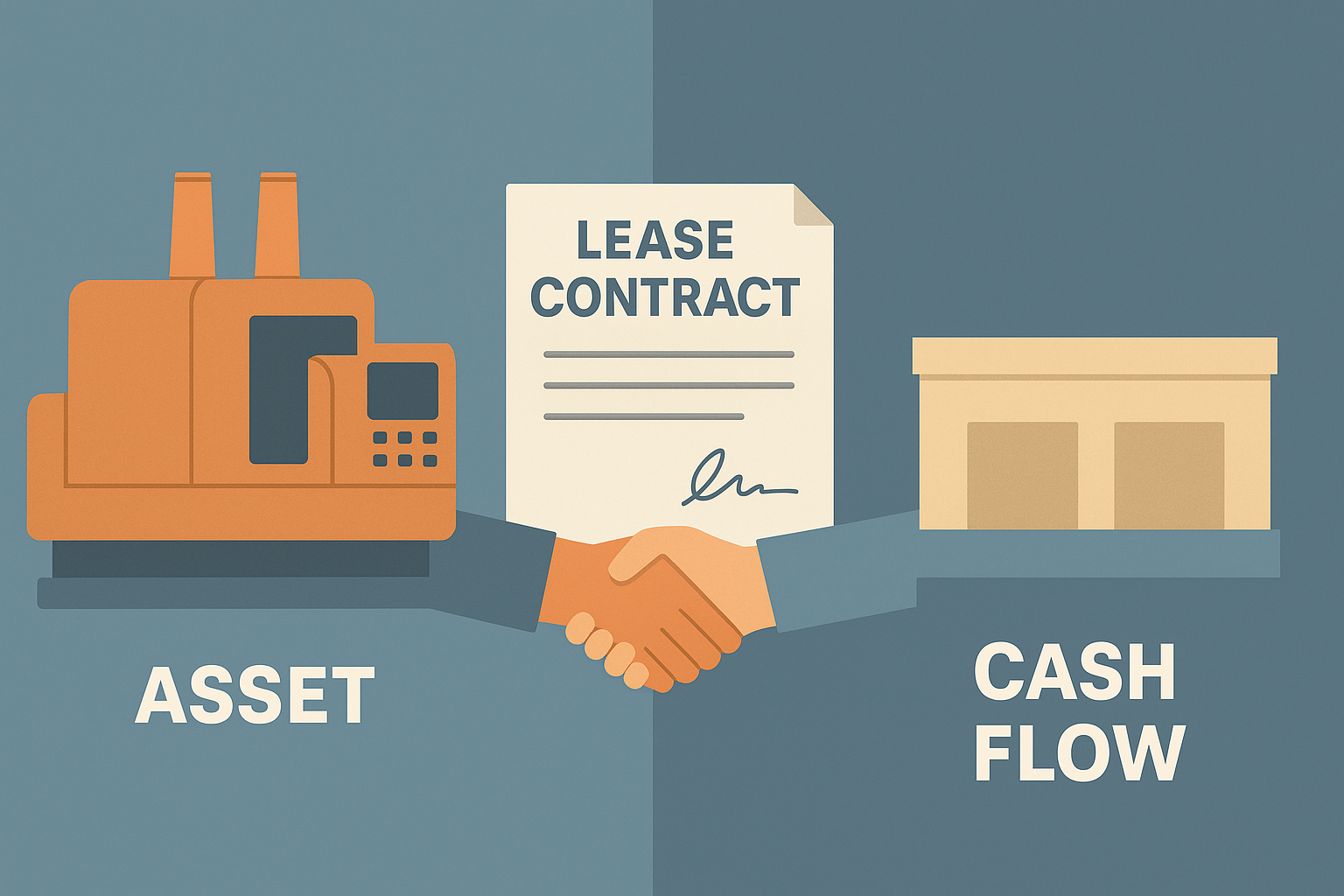1 (800) 584-0324
Many businesses sit on valuable real estate or equipment but struggle with cash flow. Instead of selling assets outright or taking on more debt, companies can use sale-leaseback financing, a creative solution that converts illiquid assets into immediate capital while retaining operational use.
What Is Sale-Leaseback Financing?
Sale-leaseback financing is a transaction where a company sells an asset—commonly real estate, machinery, or equipment—to a buyer (often an investor or leasing company) and then leases it back.
- The company receives cash from the sale.
- It continues using the asset under a lease agreement.
- The lease payments become a predictable operating expense.
Essentially, you free up capital tied to assets without losing access to them.
When It Makes Sense
- Liquidity needs: Free up working capital for expansion, debt repayment, or operations.
- Real estate-heavy businesses: Hotels, retailers, manufacturers, or logistics firms with valuable property.
- Equipment-intensive industries: Construction, aviation, or healthcare businesses holding expensive machinery.
- Balance sheet optimization: Improve return on assets by converting fixed assets into cash.
- Debt avoidance: Raise capital without adding new debt obligations.
Benefits
✅ Immediate liquidity while retaining use of the asset
✅ Off-balance-sheet financing (depending on accounting treatment)
✅ Potential tax advantages (lease payments deductible as operating expenses)
✅ Alternative to debt financing when loan capacity is limited
✅ Flexibility in structuring terms (lease length, renewal, buyback options)
Risks and Considerations
❌ Long-term lease obligations may cost more than holding the asset
❌ Loss of asset ownership and appreciation potential
❌ Lease defaults can result in losing critical operating property
❌ Must carefully negotiate fair valuation and lease terms
Real-World Examples of Sale-Leaseback Financing
- Retail chains: Sell store properties to investors, reinvest proceeds in e-commerce or expansion.
- Manufacturers: Monetize expensive machinery while maintaining production capacity.
- Airlines: Conduct aircraft sale-leasebacks to unlock billions in liquidity while keeping fleets operational.
Sale-Leaseback Financing vs Other Options
| Factor | Sale-Leaseback Financing | Traditional Loan | Asset Sale |
| Liquidity | Immediate, tied to asset value | Dependent on borrowing capacity | Immediate but lose use of asset |
| Ownership | Sold, leased back | Retained | Transferred permanently |
| Use of Asset | Continued through lease | Retained | Lost |
| Balance Sheet Impact | Converts assets into cash + liability | Increases debt load | Removes asset, adds cash |
U.S. vs Canada Landscape
- United States: Widely used in commercial real estate and aviation. Private equity and REITs actively finance sale-leaseback deals.
- Canada: Gaining traction in industrial and manufacturing sectors. BDC and private investors offer tailored sale-leaseback options.
Reference Summary
| Article Point | Supporting Reference(s) |
|---|---|
| Definition & Mechanics of a Sale-Leaseback | Investopedia — Defines sale-leaseback as a transaction where a company sells an asset (real estate, equipment, land) and leases it back, unlocking capital while maintaining operational use and improving balance sheet health. Wikipedia — Describes leaseback as selling an asset and leasing it back long-term, commonly used in real estate and capital-intensive industries like aviation and machinery. |
| Advantages (Liquidity, Balance Sheet, Tax) | Investopedia — Highlights benefits such as converting illiquid assets into cash without diluting ownership or taking on debt, and strengthening liquidity and financial ratios. Wikipedia — Notes sale-leaseback enables access to capital, improved balance sheet, and tax benefits. |
| Risks & Considerations (Costs, Accounting Impacts) | debtbook.com — Explains how the company continues to use the asset while paying lease payments and discusses accounting and compliance responsibilities. Investopedia — Sale-leasebacks may affect financial transparency due to off-balance-sheet treatment, impacting leverage and liquidity ratios. |
| Industry Use Cases | Wikipedia — Provides real-world contexts such as airlines selling and leasing back aircraft, and industrial firms monetizing equipment. Investopedia — Common users include industries with high-cost fixed assets like real estate, aerospace, and construction. |
Considering sale-leaseback financing to unlock liquidity from your assets? Agile Solutions helps companies in the U.S. and Canada structure sale-leaseback transactions for real estate, equipment, and other high-value assets.
👉 Book a consultation today at agilesolutions.global or email us at info@agilesolutions.global
#SaleLeaseback #BusinessFinancing #AssetMonetization #LiquiditySolutions #RealEstateFinancing #EquipmentFinancing #CapitalMarkets



